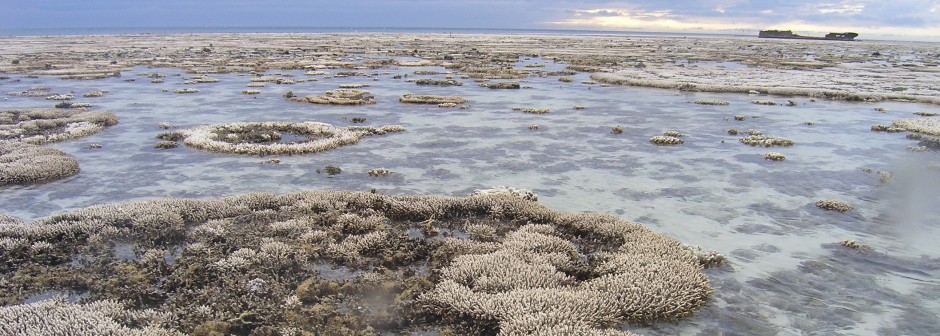The rainbow parrotfish (Scarus guacamaia) is the largest herbivorous fish in the Atlantic Ocean.1 As such, it plays an important role on coral reefs by grazing on and limiting the macroalgal biomass. A single juvenile parrotfish can take 28,000 bites per day!2 Clearly, the importance of these strong-jawed fish as grazers cannot be overstated.

Figure 1. Scarus guacamaia, commonly known as the rainbow parrotfish. These fish graze on macroalgae and are the largest herbivores in the Atlantic. (Source: http://biogeodb.stri.si.edu/caribbean/en/thefishes/species/3915)
Interestingly, the rainbow parrotfish is one of seven known Caribbean fish species that are not present or have reduced adult densities on coral reefs when mangroves are absent.3 The rainbow parrotfish is confined to shallow reefs that neighbor mangroves; however, mangroves’ being present is not the only condition required for a habitat to be suitable for rainbow parrotfish juveniles. These fish cannot survive in mangroves that have rapidly fluctuating salinity levels. Additionally, rainbow parrotfish presence is positively correlated with large changes in temperature. Depth and distance from offshore channel openings are also factors that affect the parrotfish suitability of mangrove habitats.4
Another parrotfish species, the Scarus iserti or striped parrotfish, is also a common grazing species, although it is smaller and therefore less impactful than the rainbow parrotfish (although still important nonetheless). While not functionally dependent on mangrove habitats like the rainbow parrotfish, the biomass of this species was found to be 42% greater in reefs neighboring mangroves versus in reef systems lacking mangroves.1 Therefore, mangrove connectivity can greatly increase the macroalgal grazing pressure on coral reefs by affecting the abundance of these two important grazing species.
Parrotfish graze predominantly by scraping epiphytic macroalgae from corals.4 In Figure 1, a rainbow parrotfish can be seen grazing on macroalgae. Their role in removing macroalgae is very important for coral health. This is because when macroalgal abundance becomes too high, settlement space for corals is reduced, and the mortality rate for coral recruits is increased.1 Figure 2 shows a coral colony that has been overgrown by macroalgae. Both of these effects can lead to a decrease in live coral cover. It has been shown that high levels of grazing by parrotfish have doubled the rate of recruitment of corals.4 Also, grazing by parrotfish can increase the probability that coral populations will recover from sudden phase changes, such as hurricanes, as a result of their reducing the levels of macroalgae.1

Figure 2. A coral colony dominated by macroalgae. Overgrowth by macroalgae can lead to coral cover loss. (Source: http://www.reefnation.com/wastewater-in-the-florida-keys-contributing-to-coral-reef-decline/)
Hopefully, it is clear by now that parrotfish, especially S. guacamaia, are very vital members of the coral reef ecosystem. Alarmingly, the rainbow parrotfish is currently considered “vulnerable” by the International Union for Conservation of Nature. The reasons for this status are reduction in the size of individuals due to fishing pressure, and the reduction of suitable habitats (which, as mentioned, must be fairly specific). Scientists are concerned that declines in rainbow parrotfish will accelerate coral declines due to the reduction in macroalgal grazing that will occur.4 Currently, the main threat to rainbow parrotfish is habitat loss. For this reason, it is crucial that, in order to preserve coral reef ecosystems, we must also take measures to preserve mangrove forests situated near reefs.
Mangroves are currently a threatened habitat, having been heavily exploited in recent years for aquaculture farming and timbering.5 Figure 3 shows an aquaculture farm for producing shrimp in what was originally a pristine mangrove habitat. If mangrove decline continues at current rates, they will be completely gone in 100 years.6 Without mangrove forests present, there will not be any rainbow parrotfish on coral reefs. Keep in mind that this would mean that, for every individual fish lost, there would be between 28,000 and 16,000 less bites, depending on the age of the individual, to the macroalgae biomass every day.2 This would mean over 480,000 less bites each month per individual lost and that corals would have a much harder time competing with macroalgae. Steps must be taken to conserve mangrove habitats so that we will have the aid of the powerful rainbow parrotfish in combatting coral decline.

Figure 3. Aquaculture farming of shrimp in a mangrove forest. Aquaculture farming has led to a loss in magrove habitats, which can have devastating effects on rainbow parrotfish populations. (Source: http://earthjournalism.net/resources/environmental-problems-of-aquaculture)
The Nature Conservancy, Conservation International, and the World Wildlife fund have teamed up to create the Mangrove Alliance with the goal of strengthening mangrove conservation efforts and raising awareness about their importance.6 A plan of action is currently being developed, and hopefully mangrove populations will be able to recover.
Footnotes:
- Mumby, P. J., Hastings, A. “The impact of ecosystem connectivity on coral reef resilience.” Journal of Applied Ecology, 45, 854-862.
- Dunlap, M., Pawlik, J. R. “Spongivory by Parrotfish in Florida Mangrove and Reef Habitats.” Marine Ecology, 19, 4, 325-337.
- Nagelkerken, I. “Are non-estuarine mangroves connected to coral reefs through fish migration?” Bulletin of Marine Science, 80, 3, 595-607.
- Machemer, E. G. P., Walter, J. F., Serafy, J. E., Kerstetter, D.W. “Importance of mangrove shorelines for rainbow parrotfish Scarus guacamaia: habitat suitability modeling in a subtropical bay.” Aquatic Biology, 15, 87-98.
- Ilman, M., Dargusch, P., Dart, P., Onrizal. “A historical analysis of the drivers of loss and degredation of Indonesia’s mangroves.” Land Use Policy, 54, 448-459.
- “Environmental groups plot course to reverse loss of mangroves during World Ocean Summit.” Yucatan Times, 8 March 2017.

